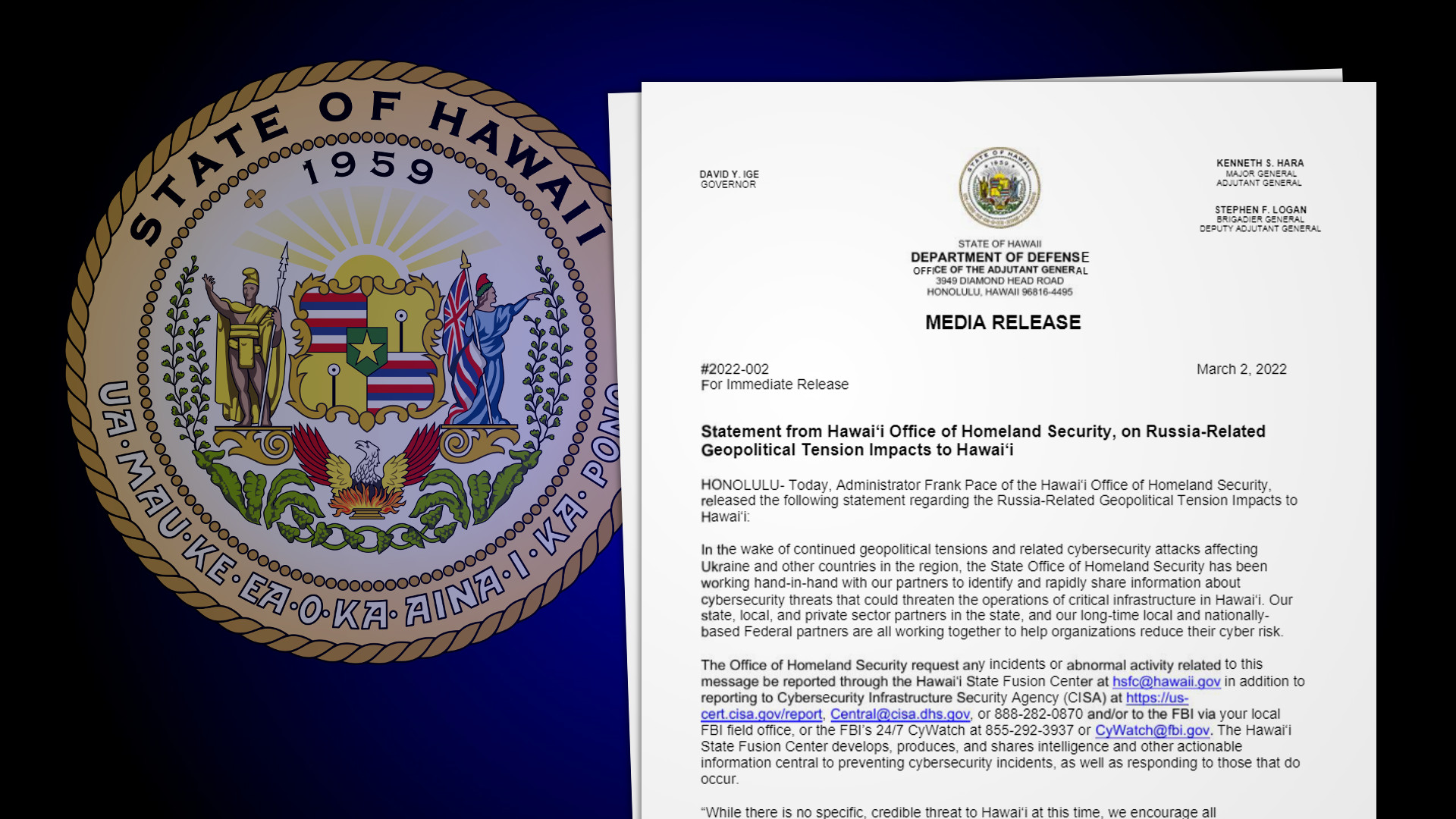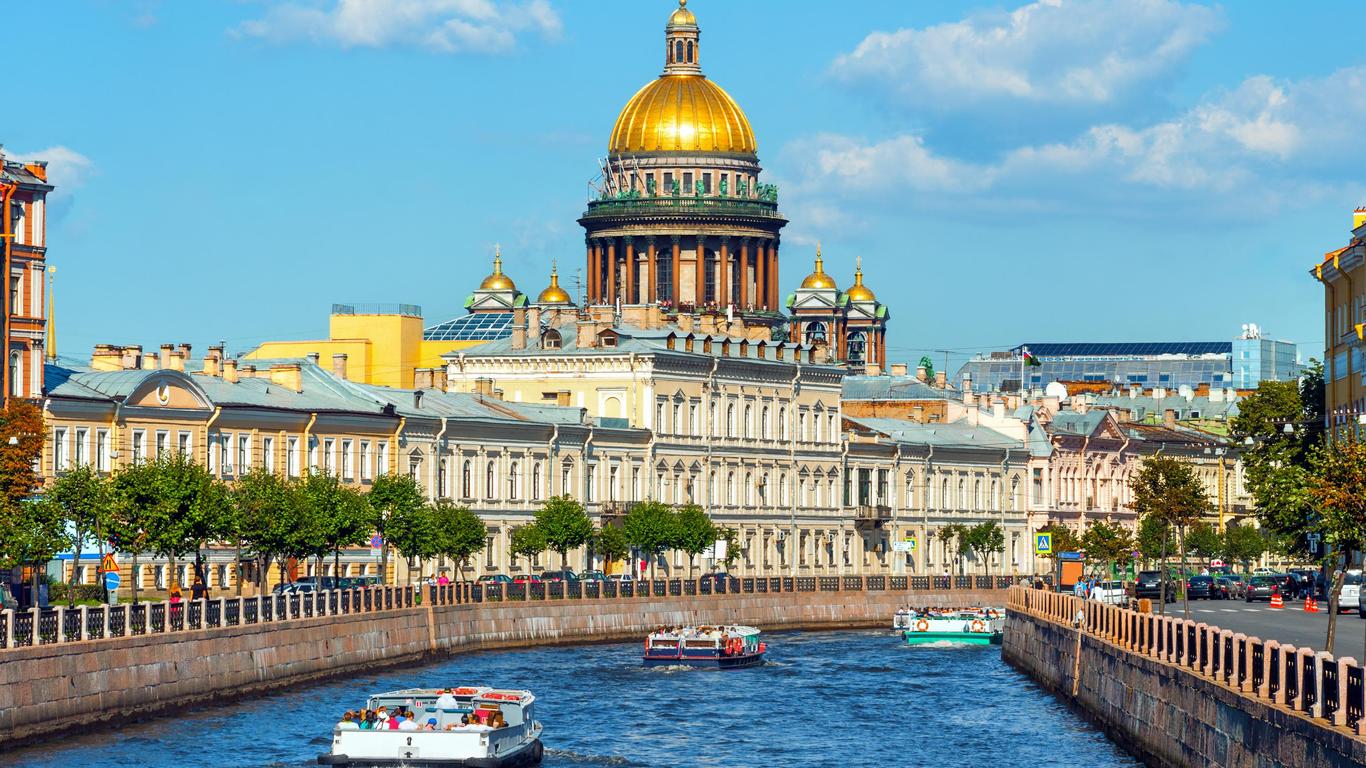Russia Near Hawaii - Share on Facebook Share on Twitter Share on LinkedIn Share on Reddit Share on Flipboard Share by Email Comments
Russian navy ships approached the coast of Hawaii in a provocative move by Moscow during its largest military exercises in the region since the end of the Cold War.
Russia Near Hawaii

Although the Russian ships did not enter US territorial waters, Navy Capt. Mike Kafka, a spokesman for the US Indo-Pacific Command, said they came within "approximately 20 to 30 nautical miles (23 to 34 statute miles) off the coast of Hawaii."
Analysis: Why Russia Has Its Eye On Hawaii
However, the Russian spy ship remains in Hawaii's operational area, according to various sources.
The proximity of the Russian ships to the US contradicts a statement issued by the Kremlin's Defense Ministry on Monday, which said ships of its Pacific Fleet were conducting large-scale exercises about 2,500 miles southeast of the Kuril Islands. That would put them between 300 and 500 miles off the coast of Hawaii.
The aircraft carrier USS Carl Vinson, pictured in 2018, deployed to Hawaii this month during Russian exercises in the Pacific. getty
Kafka did not confirm which Russian ships were in the area, but a Defense Department statement said it was the flagship of the Pacific Fleet
Ww3 Fears As Us 'warned It Could Face Pearl Harbor Style Attack' As Russia Conducts War Games Off Hawaii
A U.S. Navy spokesman also declined to comment on whether warnings had been issued to Russian ships in the region, saying, "I'm not going to get into our tactics and procedures," according to The Drive. "I can say that we act in accordance with international law and we expect Russia to do the same.
"US military forces are present and active in and around the Western Pacific on a daily basis in support of the homeland and ensuring a free and open Indo-Pacific," he added.
Last week, ahead of a summit in Geneva between President Joe Biden and Vladimir Putin, Moscow said the exercises in the Pacific would include surface ships, anti-submarine aircraft and long-range bombers.

As the drills took place, the US on Sunday deployed F-22 Raptors from Joint Base Pearl Harbor-Hickam in response to Russian bomber flights. The Russian plane did not enter the air defense identification zone, CBS News reported.
Russian Hawaii: The Attempt At Conquest That Came To Naught
, which supports the new F-35C stealth fighters, arrived in the Hawaiian Islands for exercises that coincided with the Russian Auxiliary General Intelligence Ship, or AGI, deployed to international waters north of Oahu,
Retired Navy Capt. Carl Schuster, former director of operations for the US Pacific Command's Joint Intelligence Center, told the newspaper: "I bet AGI is monitoring
Last month, the US Pacific Fleet tracked down the AGI ship Kareliya, which was operating off the coast of Kauai near the Pacific Missile Range Facility Barking Sands. The site is used for missile testing.
The latest drills come amid tensions between Russia and the US over military exercises. In April, Lt. Gen. David Krumm, head of the U.S. Northern Command's Alaska branch, said 2020 saw a record number of intercepts by Russian aircraft off the U.S. West Coast, overwhelming U.S. units.21 °57′6″N 159 ° 39′51″W / 21.95167 °N 159.66417 °W / 21.95167; -159.66417 Coordinates: 21°57'6"N 159°39'51"W / 21.95167°N 159.66417°W / 21.95167; -159.66417
File:1804 Russian Map Hawaii.jpg
Pā'ula'ula State Historic Park (Russian Fort Elizabeth) is a National Historic Landmark and is managed as Pā'ula'ula State Historic Park, southeast of ancient Waimea on the island of Kauaʻi, Hawaii.
It is located on the site of the former Fort Elizavety (Russian: Fort Elizavety), the last remaining Russian fortress on the Hawaiian Islands, which was built in the early 19th century by the Russian-American company as a result of an alliance with the high chief Kaumualizhi. .
Star Fort was employed by the Kingdom of Hawaii in the 19th century under the name Fort Hipo (Hawaiian: Paʻulaʻula o Hipo).

In 1815, the German physician Georg Anton Schäffer, an agent of the Russo-American Company, arrived in Hawaii to recover goods confiscated by Kaumualiʻi, chief of Kauaʻi Island.
Ukrainians Stranded In Hawaii Get Help From Canoe Paddlers
According to the company's instructions, Schäffer had to start by establishing cool relations with King Kamehameha I, who had created a kingdom that included all the islands of Hawaii and was opposed by Kaumuali'i rebels. With or without Kamehameha's support, Schäffer had to recoup the cost of Kaumualiji's lost goods.
Schäffer's medical expertise earned Kamehameha's respect, but he died of any Russian help against Kaumualizhi. Schäffer was accompanied by two company ships, Otkrytie and Il'ma. He sailed to Kauaʻi alone. To his surprise, Kaumualiʻi eagerly signed a "treaty" granting the Russian Emperor Alexander I of Russia a protectorate over Kaua`i. Kaumualiʻi convinced Schäffer that the Russians could easily occupy the entire archipelago. Schaefer promised that Emperor Alexander would help him get rid of Kamehameha's rule. Officially, Kaumualiʻi swore allegiance to Kamehameha in 1810. Kaumualiʻi probably never intended to relinquish control of the island; he thought he could regain his kingdom with the help of Russia. Kaumuali'i allowed Schaefer to build a fort near Waimea, named Fort or Fortress Elizabeth (Russian: Елизаветинская крепость, Elizavetinskaya Крепост') in honor of the then empress of Russia, Louise of Bad. The other two - Fort Alexandra (Krepost Aleksandra , Krepost' Aleksandra) and Fort Barclay-de-Tolly (fort Barklaâ-de-Tolli , Fort Barklaya-de-Tolli) - are named after the reigning Emperor Alexander and his Marshal Michael Andreas Barclay de Tolly was built near Hanalei on Kauaʻi. Fort Elizabeth was built in 1817 on the east bank of the Waimea River overlooking Waimea Bay. This fort was built in the shape of an irregular octagon, about 300 to 450 feet (90 to 140 meters) in diameter, with walls 20 feet (6 m) high. It housed a small Russian Orthodox chapel, the first Orthodox church in Hawaii. A small Orthodox chapel was also located in the fortress Alexander built in Hanalei Bay. When it was discovered that Schäffer did not have the support of the emperor, he was forced to leave Kauaʻi in the fall of 1817. Captain Alexander Adams replaced the Russian flag with a new flag of the Kingdom of Hawaii sometime before October 1817. The Russian Fort Elizabeth eventually came under the control of Kamehameha supporters.
In 1820, cannons were fired in salute when Kaumualiʻi's son, Prince George "Prince" Kaumualiʻi (also known as Humehume) arrived aboard the ship Thaddeus, after taking the American missionaries home. Humehume tried to raise a rebellion in 1824 by attacking the fort. It was used as a base for his conquest and maintenance of the unification of the kingdom. It was abandoned in 1853.
The Kingdom of Hawaii commissioned Kauaʻi pioneer Valdemar Knuds to remove the weapons from the fort. Similar work was being done throughout the kingdom at the time, while other forts were dismantled at Kailua-Kona, Lāhainā, and along the coast of the old harbor of Honolulu. In a letter to Honolulu, Knuds listed the inventory of weapons in the fort after the 1862 survey. These included 60 flintlock muskets, 16 swords, 12 18-pounder guns, 26 4- and 6-pounder guns, 6 heavy guns and 24 small arms. During the dismantling of the fort in 1864, while Knuds was loading guns and ammunition to be sold as scrap on a schooner in Waimea Bay, one or two cannons fell into the murky waters of Waimea Bay.
Russia In Review: June 23
21°57'6"N 159°39'51"W / 21.95167°N 159.66417°W / 21.95167; -159.66417, on the southeast bank of the mouth of the Waimea River in Waimea, Kauai County, Hawaii. A small parking lot is located south of the Hawaii Route 50 bridge, known as the Kaumualiʻi Highway in honor of the last king. Park amenities include an interpretive walking trail and restrooms. A brochure detailing the site is available for a self-guided interpretive tour. Visitors to this site can have fun exploring the ruins of the fort, viewing the scenery, photographs and historical interpretations.
This magnificent stone structure is the most magnificent reminder of the Russian attempts to gain a position of influence in the Hawaiian Islands during the early 19th century. Alexander Baranov, governor of the Russo-American Company at Sitka, wanted to trade with the Hawaiian Islands to obtain food for the Alaskan settlements and prepared several ships for this purpose. One of these ships was wrecked off Waimea, Kauai, in 1815; and the following year, Dr. Baranov. Georg Anton Scheffer to return the cargo and possibly open a permanent Russian trading post or gain a political position in SL. Scheffer was successful in quickly gaining influence with King Kaumualii of Kauai, and in the summer of 1816 he persuaded him to sign a treaty giving the Russians special commercial and economic privileges on Kauai and Oahu. In a failed attempt to build a fort in Honolulu, Scheffer returned to Kauai to consolidate his position with Kaumuali. His aim, apparently, was to persuade the king to declare his independence from Kamehameha and take him under Russian protection. He mostly built an earthen wall at Hanalei; and, sometime between April and October 1817, he built a stone fort at Waimea, over which the Russian flag was hoisted.
The Waimea establishment was huge. In addition, the fort was equipped with cannons and barracks.

Hotels near laie hawaii, hotels near waikiki hawaii, hotels near maui hawaii, hotels near honolulu hawaii, hotels near waianae hawaii, russia hawaii tours, hotels near oahu hawaii, hotels near hawaii airport, was hawaii purchased from russia, hotels near hawaii, hawaii russia, resorts near kona hawaii
0 Comments